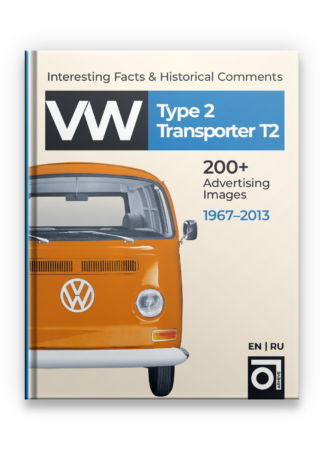Description
VW Beetle (Type 1) Hardcover book (fragment of text)
The history of Volkswagen began with the Beetle. This cute car, which got the name Beetle for its characteristic design, became one of the most popular and beloved cars of the 20th century.
Moreover, thanks to the Beetle and the Transporter van based on it, the company from Wolfsburg became a true symbol of the postwar “economic miracle” in Germany.
In the early years, cars were available only to a limited number of wealthy people. But with the development of production technology and the emergence of new designs, more and more automakers began to explore the possibility of creating a simple and unpretentious car available to a wide range of buyers.
Henry Ford was the first to realize the idea of the “people’s car.” His famous Ford Model T, which was produced from 1908 to 1927, sold more than 15 million cars worldwide.
German designer Ferdinand Porsche also shared the ideas of his overseas colleague. Thanks to his engineering genius, the famous Volkswagen Beetle was created, which later managed to overtake the Model T in terms of the number of cars produced: 21,528,480 Beetles were manufactured from 1945 to 2003.
It is important to note that this is an absolute record for a car of the same model, and not for different generations of cars produced with the same name.
The VW Beetle became a true “citizen of the world,” and it was produced in a total of 20 countries. Millions of people got acquainted with their first car with the Wolfsburg emblem on the steering wheel while still in driving school.
And millions purchased a Beetle as their first car, new or used. Even now, this car is a reliable friend and a favorite for a large number of motorists on all continents.
The idea of a German “people’s car” (“volkswagen” in German) increasingly preoccupied Ferdinand Porsche. He clearly articulated his thoughts on this issue in his thesis “Vision of the design of the German People’s Car”, presented on January 17, 1934.
In his opinion, the car should be reliable, unpretentious, have a lightweight design, accommodate four people, reach speeds of up to 100 km/h and manage slopes up to 30%. Adolf Hitler’s rise to power in 1933 helped to realize this ambitious project.
The Fuhrer loved cars, and in one of his addresses to the German people, he expressed the opinion that hardworking German workers would have their own personal cars. In addition, he even specified the concept of the future German people’s car, which would reach a speed of at least 80 km/h, use up to 5 liters of fuel per 100 km, and cost 1,000 Deutschmarks. Without thinking twice, Porsche presented his project to the country’s new leadership and… received approval.
The first prototype of the future Volkswagen was completed on February 5, 1936. Its design was innovative in every way. The chassis had an independent torsion bar suspension. The braking was mechanically enhanced by an appropriate lever through a cable system.
The engine was mounted on soft rubber supports. It was air-cooled and had 22.5 hp. Three prototypes called V3 covered over 50,000 kilometers during the test period from October to December 1936. The experience gained was the basis for the next batch of 30 prototypes, called VW30.
Read the continuation of VW Beetle (Type 1) story in the book.
Other books about history of Volkswagen:




















Reviews
There are no reviews yet.